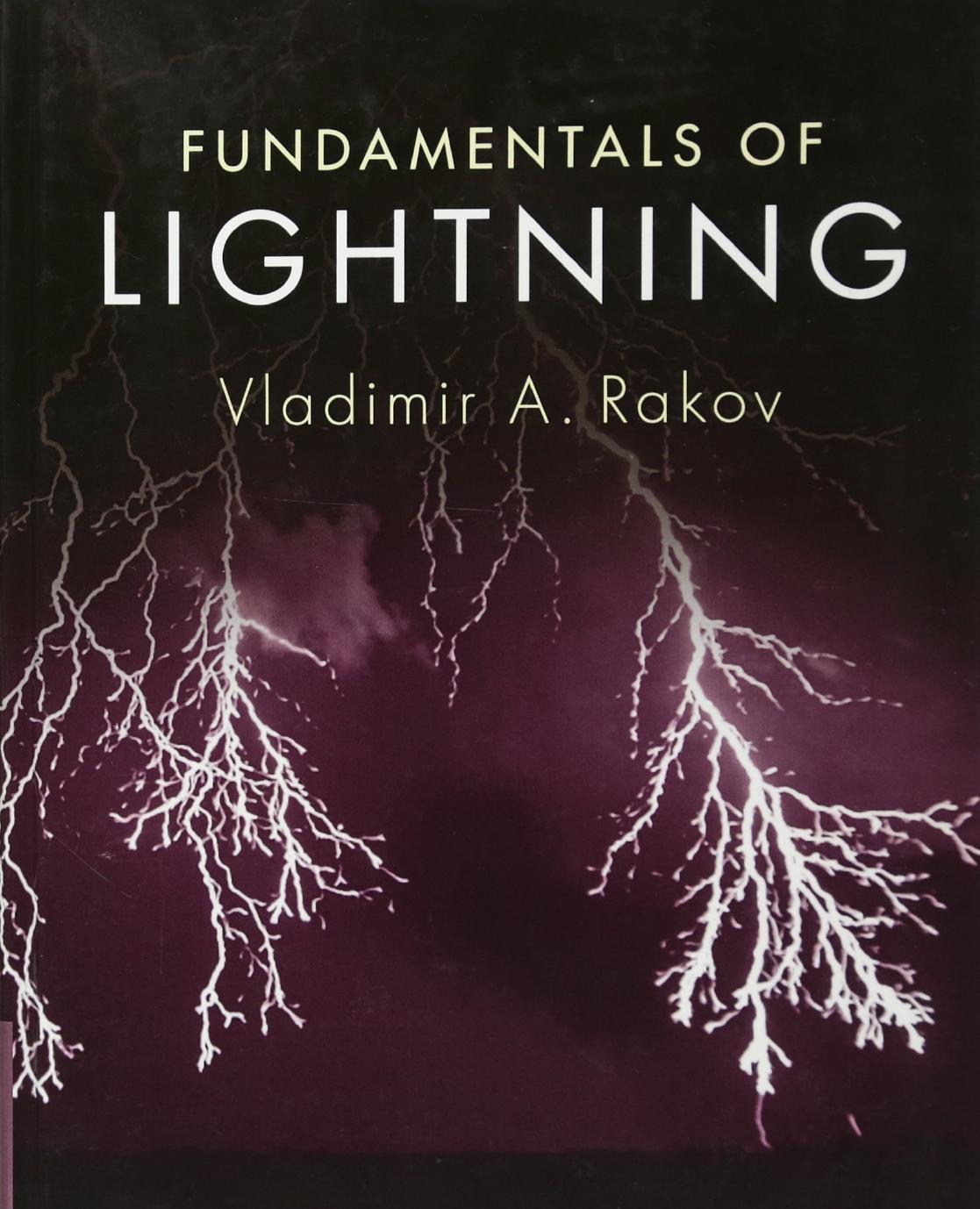Fundamentals of Lightning 1st edition by Vladimir Rakov 9781316577493 131657749X
$70.00 Original price was: $70.00.$35.00Current price is: $35.00.
Instant download Fundamentals of Lightning by Rakov (1st edition) after payment
Fundamentals of Lightning 1st edition by Vladimir Rakov – Ebook PDF Instant Download/Delivery:9781316577493, 131657749X
Full dowload Fundamentals of Lightning 1st edition after payment:

Product details:
• ISBN 10:131657749X
• ISBN 13:9781316577493
• Author:Vladimir Rakov
Fundamentals of Lightning
Fundamentals of Lightning 1st Table of contents:
1 Types of lightning discharges and lightning terminology
1.1 Overview
1.2 Downward negative lightning
1.3 Downward positive lightning
1.4 Artificially initiated lightning
1.5 Upward lightning
1.6 Luminous phenomena between cloud tops and the ionosphere
1.7 High-energy radiation from lightning and thunderstorms
1.8 The global electric circuit
Questions and problems
Further reading
2 Incidence of lightning to areas and structures
2.1 Introduction
2.2 Thunderstorm days
2.3 Thunderstorm hours
2.4 Ground flash density
2.5 Lightning incidence to various objects
2.5.1 General information
2.5.2 Downward flashes
2.5.3 Upward flashes
2.6 Summary
Questions and problems
Further reading
3 Electrical structure of thunderclouds
3.1 General information about thunderstorms
3.2 Idealized gross charge distribution
3.2.1 General information
3.2.2 Simple model
3.2.3 Electric field due to cloud charges
3.2.4 Electric field changes due to lightning
3.3 Observations
3.3.1 Remote measurements
3.3.2 In-situ measurements
3.3.3 Main results
3.4 Mechanisms of cloud electrification
3.4.1 Convection mechanism
3.4.2 Graupel-ice collision mechanism
3.5 Lower positive charge region
3.6 Summary
Questions and problems
Further reading
4 Properties of the downward negative lightning discharge to ground
4.1 General picture
4.2 Initial breakdown
4.2.1 General information
4.2.2 Initial breakdown pulses
4.3 Stepped leader
4.3.1 General information
4.3.2 Overall electric and magnetic fields
4.3.3 Leader to return stroke electric field change ratio
4.3.4 Leader steps
4.4 Attachment process
4.5 Return stroke
4.5.1 Parameters derived from channel base current measurements
4.5.2 Luminosity variation along the channel
4.5.3 Propagation speed
4.5.4 Equivalent impedance of the lightning channel
4.5.5 Electric and magnetic fields
4.5.6 Peak currents inferred from measured fields
4.6 Subsequent leader
4.7 Continuing current
4.8 M-component
4.9 J- and K-processes
4.10 Summary
Questions and problems
Further reading
5 Calculation of lightning electromagnetic fields
5.1 General approach
5.2 Field equations
5.3 The reversal distance for electrostatic and induction electric field components of a short current element
5.4 Non-uniqueness of electric field components
5.5 Short channel segment vs. total radiating channel length
5.6 Channel-base current equation
5.7 Propagation effects
5.8 Summary
Questions and problems
Further reading
6 Modeling of the lightning return stroke
6.1 Introduction and classification of models
6.2 Engineering models
6.3 Equivalency between the lumped-source and distributed-source representations
6.4 Extension of models to include a tall strike object
6.5 Testing model validity
6.5.1 “Typical-event” approach
6.5.2 “Individual-event” approach
6.6 Summary
Questions and problems
Further reading
7 Measurement of lightning electric and magnetic fields
7.1 Wideband electric field measurements
7.1.1 Ordinary capacitive antennas
7.1.2 Field mills
7.1.3 Pockels sensors
7.2 Wideband magnetic field measurements
7.3 Characteristics of wideband electric and magnetic fields produced by lightning
7.4 Summary
Questions and problems
Further reading
8 Electromagnetic methods of lightning location
8.1 Introduction
8.2 Principles of lightning location
8.2.1 General
8.2.2 Magnetic Direction Finding (MDF)
8.2.3 Time-of-Arrival (TOA) technique
8.2.4 Interferometry
8.2.5 Lightning location on global scale
8.3 Performance characteristics
8.4 Examples of modern lightning locating systems
8.4.1 Lightning Mapping Array (LMA), 60–66 MHz
8.4.2 US National Lightning Detection Network (NLDN), 400 Hz–400 kHz
8.4.3 LIghtning detection NETwork (LINET), 1–200 kHz
8.4.4 US Precision Lightning Network (USPLN), 1.5–400 kHz
8.4.5 Earth Networks Total Lightning Network (ENTLN), 1 Hz–12 MHz
8.4.6 World Wide Lightning Location Network (WWLLN), 6–18 kHz
8.4.7 Global Lightning Dataset (GLD360), 300 Hz–48 kHz
8.5 Summary
Questions and problems
Further reading
9 Lightning damaging effects and protective techniques
9.1 General principles
9.2 Lightning parameters vs. damage mechanisms
9.3 Electrogeometrical model (EGM)
9.4 Bonding vs. isolating approaches in lightning protection practice
9.5 Summary
Questions and problems
Further reading
Appendices
Appendix 1 How is lightning initiated in thunderclouds?
A1.1 Conventional breakdown
A1.2 Runaway breakdown
Appendix 2 Reconstruction of sources from measured electrostatic field changes
A2.1 Monopole model
A2.2 Dipole model
A2.3 Point dipole model
Appendix 3 Derivation of exact equations for computing lightning electric and magnetic fields
A3.1 Differential current element at z′ = 0 in free space; field point at z > 0
A3.2 Elevated differential current element (z′ > 0) and its image
A3.3 Elevated differential current element above ground and its image; field point on the ground surface
A3.4 Vertical lightning channel above ground; field point on the ground surface
Appendix 4 Compact intracloud discharges (CIDs)
Appendix 5 Is it true that lightning never strikes the same place twice?
Appendix 6 Is it possible to use lightning as an energy source?
Appendix 7 Lightning safety
Appendix 8 Lightning makes glass
A8.1 Introduction
A8.2 Characterization of lightning
A8.3 General information on fulgurites
A8.4 Fulgurites created at Camp Blanding, Florida
A8.4.1 Underground power cable project (1993–4)
A8.4.2 World-record fulgurite (1996)
Appendix 9 Bibliography on triggered lightning experiments and natural lightning observations at Camp Blanding, Florida (1995–2014)
Glossary
References
Index
People also search for Fundamentals of Lightning 1st:
fundamentals of lightning
fundamentals of lightning protection
about to be struck by lightning
fun facts about lightning
fun facts about thunder and lightning


